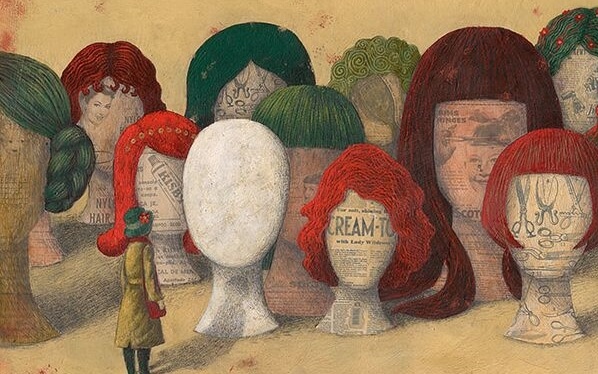Narcissistic Families Breed Emotional Pain


Written and verified by the psychologist Valeria Sabater
Narcissistic families are like spiders, trapping their children in a web of emotional suffering.
In this type of family dynamic, there’s always one person who puts their own needs before everybody else’s, thus obtaining absolute power. They use it to manipulate others with the goal of feeling taken care of, recognized, and validated at all levels.
People who grow up in dysfunctional environments like this say their family looks perfect on the outside, but on the inside it’s a living hell. It isn’t easy to get out of the situation.
While the bonds that develop in each family have their own fingerprints, they still share some important things in common.
The most characteristic trait of narcissistic families is the existence of very specific but unspoken rules. They’re rules that revolve around one person. They take the rights and recognition away from everyone else.
Therefore, it’s common for children to lack an emotional connection with their parents. The parents look down on them and subject them to silent but enduring mistreatment.
The truth about the unhealthy family dynamic is often silenced forever by cutting branches off the family tree.
In fact, the second the child becomes an adult and is able to finally escape their denigrating childhood environment, they get labeled a “bad kid” for abandoning the family, for daring to cut ties.
Children who live in narcissistic families struggle to acknowledge the abuse, emotional deficiencies, and the psychological damage they’ve suffered. In other people’s eyes, they have the perfect family.

Scapegoats
Sara is 20 years old and is studying psychology. It’s been a year since she stopped living with her parents, and now she wants to restart her life from a distance, to get perspective, to put the pieces of herself back together so she can overcome her past and try to move forward.
Her scars come from the narcissistic family she grew up in, where her parents both played the power game.
Her father suffered from some type of personality disorder. She knows that now thanks to her studies. But nobody ever dared suggest he get professional help because the context in which he lived made it possible for him to be high-functioning even with his disorder.
Her mother was instrumental in that aspect, but she was also another victim of his. She gave in to all of his needs and was never able to set limits.
Sara was the scapegoat, her narcissistic father’s object of projection. The recipient of his frustrations, failures, and anger.
Her older sister, however, was the golden child. He molded her in his own image. And for some reason, he thought she was more talented than Sara. The situation affected Sara so much that she started to think that she was somehow defective.
But although the scapegoat occupies the worst position in narcissistic families, the golden child isn’t exactly a desirable position either. Such high expectations are placed on them that they’re more than guaranteed to suffer as well.

Common characteristics of narcissistic families
When you’re a part of this family portrait, it isn’t easy to escape, as growing up in it involves internalizing many destructive mandates, thought patterns, and ideas that have a considerable impact on a child’s mind. Here are a few common characteristics of narcissistic families:
- You act like your family is the best, and you don’t tell anyone outside what’s going on. Narcissistic families care a lot about their image. In fact, something they say a lot is “we don’t have any problems, we’re the perfect family.”
- Completely dysfunctional parents. The role of the parent in a normal family is to provide security, affection, education, and emotional nurturing to their children. In narcissistic families, the child has one obligation: to nurture their parents.
- Lack of effective communication. The most common type of communication in narcissistic families is triangulation. In other words, they’re never direct, and they display passive-aggressive behavior based on tension and distrust. For example, in the case of Sara, every order, desire, or comment her father directed towards her came from her mother. He used her as an intermediary in order to make Sara obey.
How to get out of a narcissistic family environment
In Huckleberry Finn, Mark Twain wrote that we don’t have to let our family wounds define us. There’s always a piece of your true self hiding away in some corner of your heart that is still smiling and alive, and that can push you from absolutely nothing to happiness.
In order to remove yourself from that barren, poisonous environment, consider the following:
- Understand that people with a history of narcissistic behavior don’t generally change easily. There are therapies they can try, but very few take the step and admit something wrong.
- Try not to feel guilty for what your narcissistic family members might do. Use cognitive protection strategies so that you don’t get to the point where Sara was, thinking that there was nothing good about herself.
- It’s useless to talk about your emotions with a narcissist. They’ll probably just hurt you even more. Limit yourself to saying things like “I understand what you’re saying, but I won’t let you…,” “you should understand that you don’t have a right to…,” and “I’m asking you from now on to…” Set limits assertively.
- Find allies within your family or social circle who can understand and support you.
- Put distance between you and the narcissistic family member. That doesn’t mean you have to completely cut ties with them. But make sure you clearly understand which situations you can manage and how often you want to see them.

Not only is it unhealthy to live in an environment where emotional principles are distorted, it’s unbearable, especially for children.
When they become adults, they tend to be incapable of saying no to people or understanding they have the right to set limits. They have trouble expressing their own desires and needs, and choosing to not tolerate something.
Narcissistic families are like spiders, trapping their children in a web of emotional suffering.
In this type of family dynamic, there’s always one person who puts their own needs before everybody else’s, thus obtaining absolute power. They use it to manipulate others with the goal of feeling taken care of, recognized, and validated at all levels.
People who grow up in dysfunctional environments like this say their family looks perfect on the outside, but on the inside it’s a living hell. It isn’t easy to get out of the situation.
While the bonds that develop in each family have their own fingerprints, they still share some important things in common.
The most characteristic trait of narcissistic families is the existence of very specific but unspoken rules. They’re rules that revolve around one person. They take the rights and recognition away from everyone else.
Therefore, it’s common for children to lack an emotional connection with their parents. The parents look down on them and subject them to silent but enduring mistreatment.
The truth about the unhealthy family dynamic is often silenced forever by cutting branches off the family tree.
In fact, the second the child becomes an adult and is able to finally escape their denigrating childhood environment, they get labeled a “bad kid” for abandoning the family, for daring to cut ties.
Children who live in narcissistic families struggle to acknowledge the abuse, emotional deficiencies, and the psychological damage they’ve suffered. In other people’s eyes, they have the perfect family.

Scapegoats
Sara is 20 years old and is studying psychology. It’s been a year since she stopped living with her parents, and now she wants to restart her life from a distance, to get perspective, to put the pieces of herself back together so she can overcome her past and try to move forward.
Her scars come from the narcissistic family she grew up in, where her parents both played the power game.
Her father suffered from some type of personality disorder. She knows that now thanks to her studies. But nobody ever dared suggest he get professional help because the context in which he lived made it possible for him to be high-functioning even with his disorder.
Her mother was instrumental in that aspect, but she was also another victim of his. She gave in to all of his needs and was never able to set limits.
Sara was the scapegoat, her narcissistic father’s object of projection. The recipient of his frustrations, failures, and anger.
Her older sister, however, was the golden child. He molded her in his own image. And for some reason, he thought she was more talented than Sara. The situation affected Sara so much that she started to think that she was somehow defective.
But although the scapegoat occupies the worst position in narcissistic families, the golden child isn’t exactly a desirable position either. Such high expectations are placed on them that they’re more than guaranteed to suffer as well.

Common characteristics of narcissistic families
When you’re a part of this family portrait, it isn’t easy to escape, as growing up in it involves internalizing many destructive mandates, thought patterns, and ideas that have a considerable impact on a child’s mind. Here are a few common characteristics of narcissistic families:
- You act like your family is the best, and you don’t tell anyone outside what’s going on. Narcissistic families care a lot about their image. In fact, something they say a lot is “we don’t have any problems, we’re the perfect family.”
- Completely dysfunctional parents. The role of the parent in a normal family is to provide security, affection, education, and emotional nurturing to their children. In narcissistic families, the child has one obligation: to nurture their parents.
- Lack of effective communication. The most common type of communication in narcissistic families is triangulation. In other words, they’re never direct, and they display passive-aggressive behavior based on tension and distrust. For example, in the case of Sara, every order, desire, or comment her father directed towards her came from her mother. He used her as an intermediary in order to make Sara obey.
How to get out of a narcissistic family environment
In Huckleberry Finn, Mark Twain wrote that we don’t have to let our family wounds define us. There’s always a piece of your true self hiding away in some corner of your heart that is still smiling and alive, and that can push you from absolutely nothing to happiness.
In order to remove yourself from that barren, poisonous environment, consider the following:
- Understand that people with a history of narcissistic behavior don’t generally change easily. There are therapies they can try, but very few take the step and admit something wrong.
- Try not to feel guilty for what your narcissistic family members might do. Use cognitive protection strategies so that you don’t get to the point where Sara was, thinking that there was nothing good about herself.
- It’s useless to talk about your emotions with a narcissist. They’ll probably just hurt you even more. Limit yourself to saying things like “I understand what you’re saying, but I won’t let you…,” “you should understand that you don’t have a right to…,” and “I’m asking you from now on to…” Set limits assertively.
- Find allies within your family or social circle who can understand and support you.
- Put distance between you and the narcissistic family member. That doesn’t mean you have to completely cut ties with them. But make sure you clearly understand which situations you can manage and how often you want to see them.

Not only is it unhealthy to live in an environment where emotional principles are distorted, it’s unbearable, especially for children.
When they become adults, they tend to be incapable of saying no to people or understanding they have the right to set limits. They have trouble expressing their own desires and needs, and choosing to not tolerate something.
This text is provided for informational purposes only and does not replace consultation with a professional. If in doubt, consult your specialist.







